
What to do in Rome? Italy's capital is a living museum of history, but also offers romance, good food, sport and a big dose of religion. We've listed our top tips for a holiday or weekend in Rome, and if you want to, feel free to add your own!
Innehållsförteckning
What to do in Rome - our top tips
There are probably as many tips for things to see and do in Rome as there are people who have visited the city. We travelled to Rome on a Mediterranean cruise a few years ago and were pleasantly surprised. Even though Rome is a big city with almost 3 million inhabitants, we found the city to be genuine and cosy. Here are our top tips for things to see and do.

1. Soak up the atmosphere at Piazza Navona
Rome is a city best discovered on foot, strolling through cosy alleys and beautiful squares. Squares are called piazzas in Italian, and you'll soon discover that there are plenty of them. Piazza Navona is one of the more famous squares, surrounded by beautiful buildings.
In the centre are several fountains where you can sit down for a while and soak up the crowds. Be sure to check out the beautiful "Fontana dei Quattro Fiumi" (Fountain of the Four Rivers), dating back to 1651.

2. Hang out at the Spanish Steps
The Spanish Steps, or Scalinata della Santissima Trinità dei Monti as it is called in Italian, is one of the sights that is considered a 'must see' in Rome. Completed in 1725, the staircase has 138 steps and leads up to the church of Santissima Trinità dei Monti.
The staircase may not be a great attraction in itself, but the area around Piazza di Spagna is nice. Here you will find many cosy restaurants and outdoor cafés. Of course, you can also take the opportunity to visit the church.

3. Photograph the Fontana di Trevi
The Fontana di Trevi is an impressive fountain located in the Piazza di Trevi in Rome. The fountain, which was completed in 1762, is now very popular with tourists. In addition to its beauty, the fountain is known from Fellini's film La Dolce Vita, where Anita Ekberg took a bath here.
Today, bathing in the fountain is strictly forbidden. However, it is popular to throw down a coin. However, what you get out of throwing your money is a bit unclear. Some say it's to fulfil a wish, while others say it's to ensure you get back to Rome. "All roads lead to Rome", as the saying goes, right?
We were far from alone when we were here, and it was difficult to get a quiet or romantic experience. However, if you push yourself, you can manage to get a photo of the famous fountain.

4. See the Viktor Emanuel monument in Piazza Venezia.
Piazza Venezia is a large and imposing square in the centre of Rome. It is home to the magnificent Victor Emanuel Monument, which was built in honour of King Emanuel II between 1885 and 1911. Although the monument is grand, it is not universally loved and has sometimes been referred to as 'the typewriter' or 'the ransom'.
Whatever you think of the monument, this is an exciting and intense place. It also houses the Palazzo Venezia, and from here you can reach Rome's main shopping street, Via del Corso. We found an outdoor terrace nearby and took a break with a beer, while the hectic Italian life went on in the background.

5. Travel in time at the Colosseum
You can't visit Rome without seeing Colosseum. This amphitheatre is the largest ever built. Construction began in 72 AD under Emperor Vespasian and was completed by his son Titus eight years later. When completed, the structure was 48 metres high, 156 metres wide and 524 metres in circumference. In total, there was room for 87 000 spectators in the stands. Truly staggering!
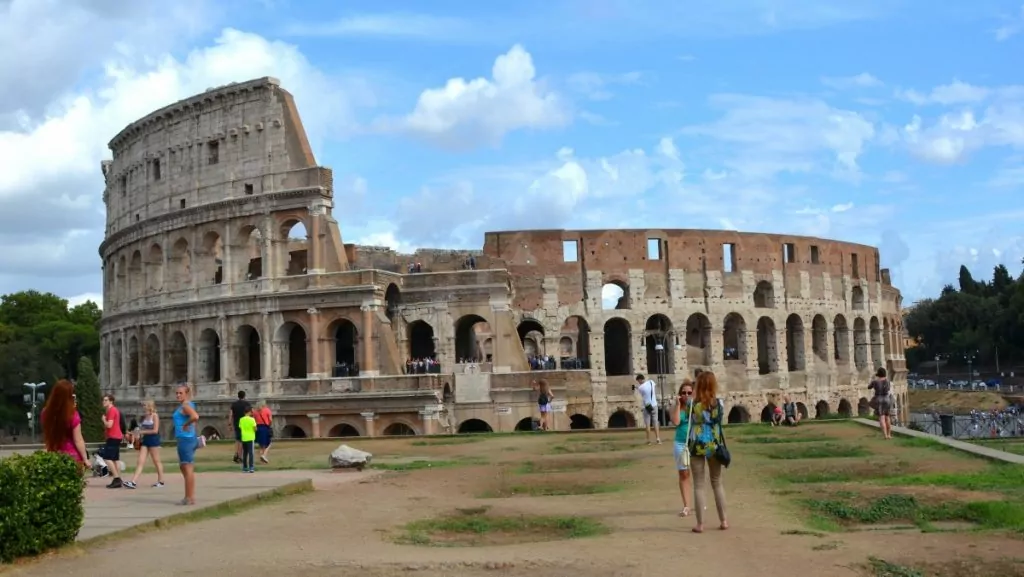
As you walk around, you can try to imagine the opening ceremony, which lasted for 100 days in 80 AD. At the opening, the Colosseum was clad in marble, the stands were packed with excited people and it is thought that around 11,000 wild animals died during the entertaining 'games'.
Tips! When you arrive at the Colosseum, you may be faced with long, winding queues, but don't despair! Instead, look for the entrance to the Roman Forum, where the queue is probably much shorter, and buy your combination ticket there. The ticket is valid for both the Roman Forum and the Colosseum, and you can see them in the order you choose.
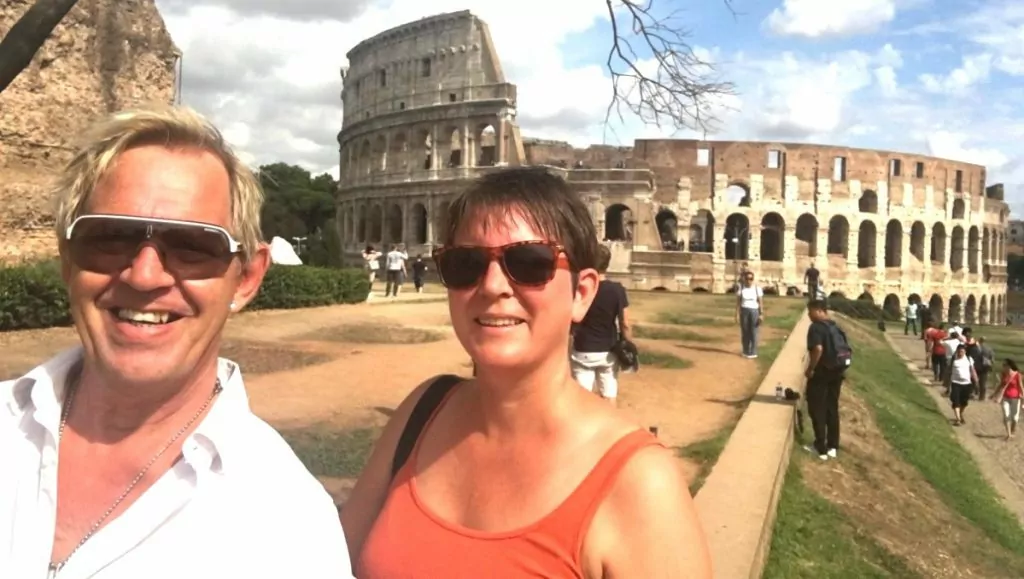
6. Feel the pulse of history at the Roman Forum
Seeing the Colosseum is amazing, but we thought walking around the Roman Forum was perhaps even more amazing. This square was the centre of trade, political meetings and religious ceremonies in Roman times. It was simply where everything happened!

Today many of the buildings are in ruins, but an impressive amount remains in the form of columns and parts of temples and triumphal arches. These include sights such as the Arch of Septimus Severus, the Temple of Saturn and the Temple of Castor and Pollux.
We recommend taking a leisurely stroll around and trying to imagine how grand these buildings must have once been. If you're not going with a guide, you might want to do some reading beforehand. It's dizzying to imagine what went on here 2000 years ago and through the ages since then.

7. admire the Pantheon
Located in Piazza della Rotonda, the Pantheon is a temple originally dedicated to all the gods of antiquity. The building was later used as a memorial temple to Italy's great men, and then as a church. The temple is one of the best preserved buildings of antiquity, with powerful columns and a large domed roof that allows sunlight to enter the temple.

8. Take a guided tour of Vatican City.
Vatican City is an independent state, completely enclosed by the city of Rome. It boasts of being the smallest country in the world, both in terms of population and area. Vatican City was established in 1929 to give the Roman Catholic Church independence from the Italian state.

It is very interesting to go on a guided tour in the Vatican City, including the Sistine Chapel and the Vatican Museums, which are filled with stunning frescoes, tapestries and statues. It is also home to the impressive St Peter's Square and the famous St Peter's Basilica.
Tips! Because Vatican City is the smallest country in the world, and because many people want to visit, queues can be very long. The best way to avoid queuing is to buy tickets online in advance.

9. Fascinated by St Peter's Basilica
The most important attraction in Vatican City is St Peter's Basilica. The church, which is the most important church in Catholicism, is named after the apostle Peter who was martyred around 64 AD. Peter is believed to have been buried at this site and the church provides direct access to Peter's tomb.
The church is beautiful inside and well worth a visit because of all the amazing decorations and paintings. Famous artists such as Michelangelo and Raphael contributed to the church's splendour.

10. Experience a football match in the Estadio Olimpíco
Many major football matches over the years have taken place at the Estadio Olimpíco, Rome's Olympic Stadium, in Rome. It has seen a long list of famous footballers such as Francesco Totti, the 'Prince of Rome', who played for Roma until 2017.
Watching football in Italy must be a special experience, and it hardly feels like you need to be a football fan to appreciate a match here. In Italy, football is not confined to the stadium, but is a party that spills out into the streets.
We had not booked a match during our days in Rome, but if you want this experience, it may be easiest to book a complete football trip, and then combine it with all the sights of the city. Read more about Football trips Roma.

11. Eat a pizza in a cosy alleyway
One of the best things to do in Rome is to sneak into a cosy alley and order a pizza. We can't remember if the pizza we ate was better than anywhere else, but the atmosphere was great! perfect. If you like good food, you can of course also enjoy pasta and various Italian delicacies.

12. Enjoy Italian ice cream
Italians know how to make ice cream. There are plenty of ice cream parlours around Rome where you can try flavours like limone (lemon), nocciola (hazelnut) or amarena (cherry). Ice cream is called 'gelato' in Italian, which by the way can refer to both ice cream in general and a specific type of ice cream, which is made from milk instead of cream.

More things to do in Rome for history lovers
Do you like history? The whole of Rome is like an outdoor historical museum and the sights are never ending. Here are more tips for things to see and do in Rome that we didn't get to during our visit. These places are on our bucket list!
- Hop-on Hop-off bus with audio guide
- Lateran Basilica, Christianity's oldest church, Piazza di S. Giovanni in Laterano
- Santa Maria Maggiore, ancient Christian basilica founded in 432, Piazza di S. Maria Maggiore.
- Basilica of San Climente, church dating from 1108, Via Labicana 95
- Villa Farnesina, large Renaissance villa from the 16th century, Via della Lungara 230
- Piazza del Popolo, square with the Flaminio obelisk, from the 13th century BC
- Arch of Constantine, triumphal arch built in 315, Via di San Gregorio
- Ponte Sant'Angelo, bridge over the Tiber built in 133-134 by Emperor Hadrian.
- The ruins of Termas de CaracallaThe "Terme di Caracalla" is an ancient bathhouse in the south of Rome, Viale delle Terme di Caracalla.
- Palatines, one of Rome's seven hills, with ruins and views.
- Castel Sant'Angelo, "The Meadow Castle" is a fortified castle, Lungotevere Castello
- Capuchin Crypt, crypt under Santa Maria della Concezione dei Cappuccini, Via Vittorio Veneto 27
- Quirinal Palace, the official residence of the President of Italy from 1673, Piazza del Quirinale
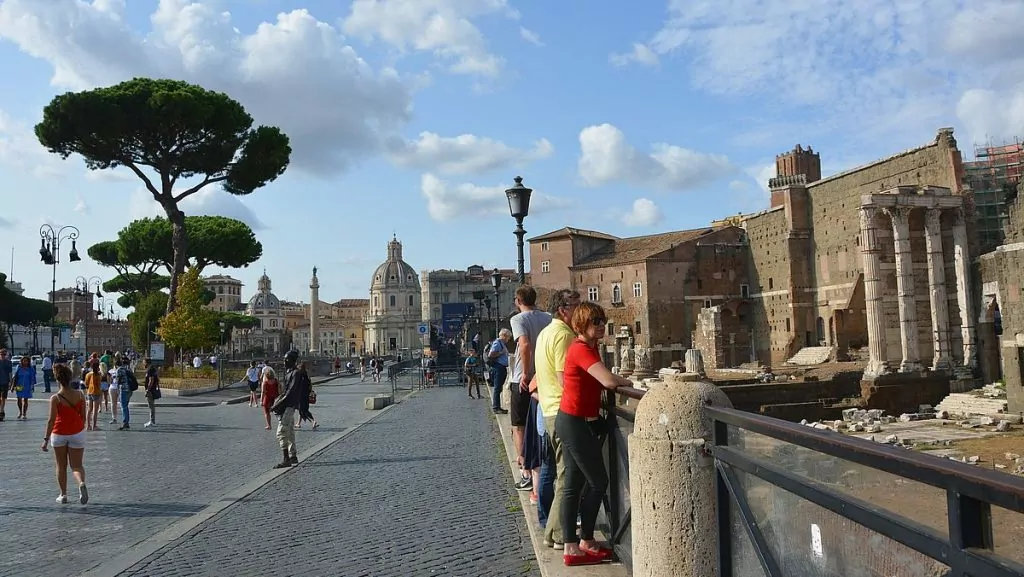
More things to do in Rome for culture lovers
Culture lovers will also find plenty more to do in Rome. For example, there are plenty of art museums. And, of course, there are many areas where you can get to know crafts and Italian food culture.
- MACRO, Museum of Contemporary Art, Via Nizza 138
- MAXXI Museum of Contemporary Art, Via Guido Reni 4A
- Galleria Borghese, art museum in Villa Borghese, Piazzale Scipione Borghese 5
- Travestere neighbourhood, an artistic neighbourhood with alleys and outdoor cafes.
- Via Margutta, narrow street with restaurants, crafts and art
- Campo de' Fiori, square where you will find a food market among other things.

More to do in Rome with children
Travelling to Rome with children? In addition to all the exciting history you'll find at the Colosseum and the Roman Forum, there are also many activities that are particularly suitable for children. Here are some tips for things to do with kids in Italy's capital city:
- Explore, museum for children with the opportunity to experiment, Via Flaminia 82
- Time Elevator, virtual time travel through history, Via dei SS Apostoli 20
- Il Bioparco, zoo with many different wild animals, Piazzale del Giardino Zoologico 1
- Villa Borghese, park in northern Rome where there are, for example, miniature trains and children's activities, Piazzale Napoleone I
- Rome's crypts and catacombs, such as Catacombe di San Callisto (Catacombs of St Calixtus) and Catacombe di San Sebastiano.
- Lido di Ostia, beach outside Rome where you can sunbathe and swim.

Where to stay in Rome?
Where can you stay? We stayed at the super cosy little hotel Room91, which Peter found online and which had good reviews. After our visit, we can also highly recommend this little gem. The hotel is located on Via Ottaviano 91, a lively street with shops and a subway, with only a few minutes walk to Vatican City. It is also within walking distance of many other attractions, as well as the pleasant neighbourhood of Travestere.



More to see and do in Italy
There are, of course, many excursions to do around Italy. Below you'll find plenty of reports with tips and inspiration.
Marina di Ragusa - sun and swimming in Sicily
Now we have arrived at Marina di Ragusa, which is located on the coast not too far from...
Umbria in Italy - among olive groves in Italy's green heart
We have to admit that we fell a bit in love with Umbria in Italy, and we understand why...
Church of the skull in Otranto - 800 skulls in an Italian church
The cathedral of Otranto in southern Italy is sometimes referred to as the Cathedral of Otranto, and there is a...
Lago di Braies in the Dolomites - beautiful alpine lake in Italy
Lago di Braies, or Pragser Wildsee as the lake is called in German, is a magically beautiful alpine lake...
Porto Pino and a campsite in southern Sardinia
Now we've made it to Porto Pino, and a campsite in the south of Sardinia near St...
Chioggia, Italy - Welcome to Little Venice!
It is not difficult to understand why Chioggia in Italy is called Little Venice. Just like Venice...
See Rome for free!
Guest writer: Charlotta Rönn A big city does not automatically mean a big hole in the coffers - not in Rome....
Exclusive Emerald Coast in Sardinia
We've heard a lot about the Emerald Coast or 'Costa Smeralda' - Sardinia's most famous stretch of beach. Here are...
Arriving in Sicily - welcome to Palermo!
Coming from Sardinia to Sicily was a bit of a shock. Palermo was quiet in the...
Shopping for wine in Italy - smart wine buying in Valpolicella
Who doesn't want to take the opportunity to shop for wine in Italy? We took the motorhome to the wine regions north...
Why not rent a motorhome in Italy? - A great motorhome country
In partnership with Compare and Choose Why not rent a motorhome in Italy? We are in...
West coast of Sardinia
The day before yesterday we left Bosa and started driving south along the west coast of Sardinia. Today we have arrived...
Are you travelling to Italy?
Today we are presenting a guest post Italy is a beautiful country with so much to see and...
Across Sardinia - Camping in Porto Torres
Today we've driven across Sardinia, from Cala Gonone in the east to a campsite in...
Sardinia-Sicily ferry - night under the open sky
Last Saturday evening we took the ferry Sardinia - Sicily, from Cagliari on Sardinia to Palermo on...
Boat trip to Neptune's caves - Alghero, Sardinia
The caves of Neptune, or Grotta di Nettuno as they are called in Italian, are located outside Alghero in Sardinia....
Hotel Il Gabbiano - on Lake Trasimeno in Umbria
In collaboration with Vilaggio Albergo Il Gabbiano Now we have spent two lovely days at the hotel....
Corsica-Sardinia ferry - quick and easy!
Corsica-Sardinia ferry, how does it work? Good in our experience. Ferries run from Bonifacio in southern Corsica...
Wine tasting in Valpolicella, Italy
Day D. Finally, it was time for the wine tasting. This is what I've been talking...
A day in La Spezia, Italy
Our Mediterranean cruise with Freedom of the Seas started in Barcelona and then continued with stops in...
The historic town of Noto in Sicily
Today we visited the Sicilian town of Noto. Noto is located south of Syracuse and is despite...
Salesmen on beaches - hot days in Sardinia
On every beach here in Sardinia (and in many other places of course) you can find them: the vendors....
Piantelle campsite on Lake Garda in Italy
At the moment we are testing at a campsite on Lake Garda in Italy. We are standing on the south-west side...
Lago d'Iseo - Italy's most beautiful lake?
Sure, Lake Garda is beautiful, but Lago d'Iseo is almost even more beautiful! We drove there in the evening...
Sicily's backside - rubbish and neglected roads
When travelling by motorhome, you get to see a bit more than a charter tourist. You don't see...
10 tips for visiting Venice
Venice is built on stilts in a lagoon. Around all the small islands there are bridges. or so...
Tropea in Italy - enjoy holidays in Calabria
Tropea in Italy took us by storm. The cliffs are high, and the village sits at the top with...
Ecological holidays in Italy - relax at an eco-resort in Umbria
In collaboration with Il Cantico Della Natura Curious about an organic holiday in Italy? We have...
The beautiful city of Trapani on the west coast of Sicily
Today we went to Trapani on the west coast of Sicily, and our main goal was to buy internet sim cards,...
A motorhome trip to Italy: Tuscany and Rome
Guest writers: Maria and Jöran Here we continue our retrospective from the years with a motorhome. Fits very...

More tips for things to do in Rome?
Do you have more tips for things to do in Rome? Let us know!
Facts about Rome - the Eternal City
- Country: Italy
- Region: Lazio
- River: Tiberian
- Established: 753 BC
- Population: 2.8 million (2018)
- Patron saint: Peter and Paul
- Areas: Centro Storico, Tridente, Trevi, Quirinalen, Celio, Esquilino, Monti, Prati, Testaccio, Travestere
Good to know
- Language: Italian (many service and tourism professionals also speak English)
- Currency: Euro
- Price mode: Cheaper than Stockholm. According to the Forex metropolitan index (autumn 2019), Rome has an index of 72, compared to Stockholm's 100.
- Electrical outlets: Sometimes suitable for Swedish plugs, sometimes not. Adapters can often be borrowed from major hotels, or bought in shops.
- Upholstery: If you want to visit churches, as a woman you may need to cover your shoulders and knees.
Shopping in Rome
- Via del Corso is Rome's main shopping street, with both chains and small shops.
- Via Cola di Rienzo is another shopping street
- Via Nazionale is a shopping street that starts at the Piazza Repubblica square.
restaurants in Rome
- La Pergola, Via Alberto Cadlolo 101, is Rome's only restaurant with three stars in the Michelin Guide. Must be booked several months in advance.
- Il Pagliaccio, Via dei Banchi Vecchi 129a, has 2 stars in the Michelin Guide and serves innovative cuisine.
- Flavour, Via Labicana 125, with one star in the Michelin Guide, is close to the Colosseum.
- Eataly, Piazzale 12 Ottobre 1492, is a food complex with restaurants and food shops.
Accommodation in Rome
- Room91 is a small, personal and modern hotel, located close to Vatican City.
- More hotels in Rome can be found, for example, on Booking.com or Hotels.com.
History of Rome
Founding: According to legend, Rome was founded on 21 April 753 BC. The city was founded on seven hills on the Tiber River by Romulus, one of the brothers Romulus and Remus.
The Kingdom of Rome: Ancient Rome was for hundreds of years the capital of the Kingdom of Rome, and the most important city in the western world.
Christianity: Rome became the early centre of Christianity, partly because the apostles Peter and Paul are believed to have been buried and executed here.
Constantine the Great: After Constantine the Great won a victory in 312 AD, Christianity was further emphasised. This included the construction of the Lateran Basilica and St Peter's Basilica.
Division into West and East: Constantine the Great moved his residence to Constantinople in 330, and in 395 the empire was divided into Western and Eastern Europe. After that, Rome's influence declined.
Looting in 410: When the Visigoths sacked Rome in 410, it was a major blow, as Rome was considered 'invincible'.
The parish council: As Rome lost political power, the Pope became increasingly important. Rome became the capital of the new 'Church State' in 756.
Repeated attacks: The city suffered repeated attacks by the Saracens and the Normans.
Rise in the 14th century: Rome experienced a new boom in the 14th century, including the construction of new churches. For example, the old St Peter's Basilica was replaced by a new one.
Looting in 1527: In the 16th century, the city suffered another sacking, this time by Charles V, known as the 'Sacci di Roma'.
Difficulties for the Church State: Napoleon I's troops occupied the Papal States and imprisoned Pope Pius VII from 1809 to 1814. The Papal States were re-established in 1815, but were dissolved when Italy was unified in 1870.
Capital of Italy: Rome became the capital of Italy, and relations between Italy and the Pope became 'strained'. In 1929, Vatican City was established.
The Second World War: Rome emerged from the war unscathed, despite Italy's involvement.




















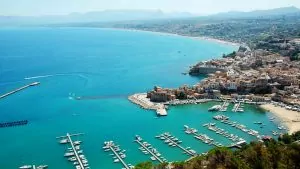
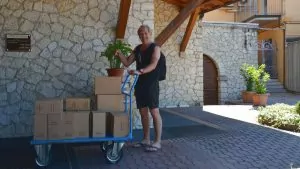









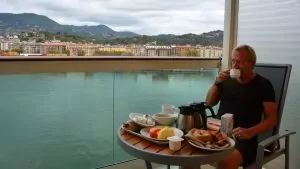







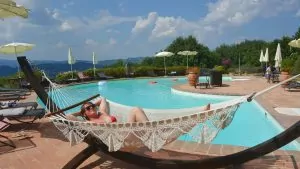








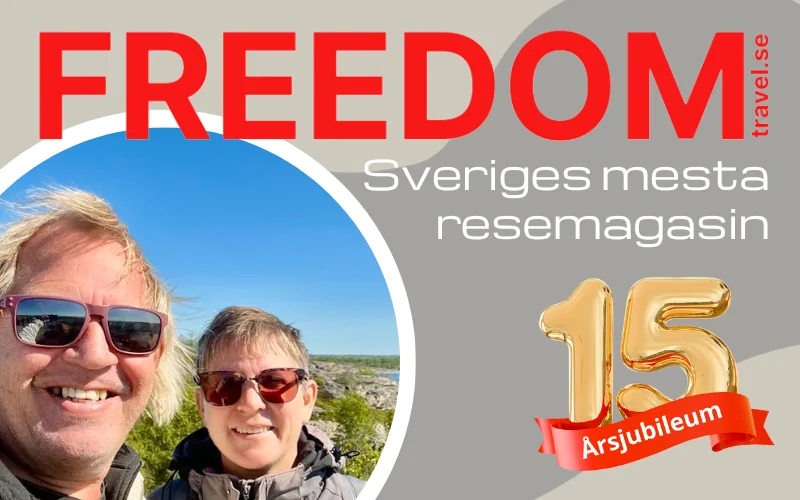


Ditte says:
Rome is always nice! We have been there a few times and the city is large and with a lot of culture and history, food and much more to take in and absorb so it is nice to have time. To "live centrally" is important, I think. We have often stayed around the Pantheon and it has been good and also sometimes in Trastevere, by the river. Nice to be able to "walk" to most things. And Rome is a city that is always alive.
11 January 2020 - 10:06
Helena says:
I agree with this about living in the centre! Everything is easier and more accessible then!
11 January 2020 - 20:20
Ditte says:
Slant on the button so the answer went away....Many good tips here that you leave. And if you're going to Rome, it's always good to have done some reading beforehand. If you have time, it is also nice to look around more outside the city. Can really recommend a train and boat trip from Rome and out to the Pontine Islands (if you come in the warmer season) Preferably with an overnight stay.
11 January 2020 - 10:11
Helena says:
Nice tip about the Pontine Islands, thank you!
11 January 2020 - 20:21
Lena - gott för själen says:
I was in Rome as a child and actually still remember the places you mention. Would love to go back to see it with adult eyes!
Hug Lena
11 January 2020 - 12:31
Helena says:
I think a lot of the history of Rome can be exciting for children too! And definitely worth revisiting Rome!
11 January 2020 - 20:22
Znogge says:
I have been to Rome and I must say that it is one of my absolute favourite cities. Even though it is a big city, it still feels manageable to get around on foot. There is so much to see and there is something for everyone.
We visited the Capuchin Crypt which was a bit off but it was a very interesting visit. The Jewish Quarter in Rome is also well worth a visit. We had lunch there and it was very good but slightly different food.
11 January 2020 - 14:29
Anette says:
If you like travelling, Rome is a must. I think it is the most beautiful and interesting city in the world.
11 January 2020 - 20:15
Helena says:
We felt exactly the same way! And glad you visited that crypt, I'd love to do that too!
11 January 2020 - 20:23
Ruth i Virginia says:
1982 - On our way back home after a couple of years in Indonesia, we decided...
us for tourism (on the state's money) and Rome became one of the
targets.
We didn't have anything booked, but even though it was April/May
it wasn't crowded anywhere. We just wandered around.
The Vatican was impressive, liked the Swiss Guards, of course. 🙂
And the Colosseum! There you could really imagine
the shows that took place. The Spanish Steps and the Fountain saw
("Roman Holiday" with Audrey Hepburn).
When I read about queues and crowds of tourists, I am happy. that
we could travel, before 'everyone else' did.
11 January 2020 - 15:27
Helena says:
Fascinating that you could visit these places before there were so many tourists! Today there are soooo many people at the main sights...!
11 January 2020 - 20:24
BP says:
Then you've covered all the "musts" if you're a tourist in Rome. A fantastic city that is well worth a visit even outside the "tourist traps".
Visiting a football match when in Italy or Spain for that matter is an absolute must, even if you don't like football. I visited the San Siro (now Guiseppe Meazza) Stadium in Milan, where AC MIlan just played Roma. It was WOW like.
On the other hand, I haven't eaten a single pizza that I liked so far, either in Rome or Milan. Doughy and dry as a bone.
11 January 2020 - 17:33
Helena says:
It would be kind of cool to experience a football match in one of these countries!!! And agree that pizza is not always good in Italy. We were quite happy just in Rome, but have had bad pizzas in several other places in Italy ...
11 January 2020 - 20:28
bmlarsreseblogg says:
I think we have covered all the points on the list, except football, unfortunately.
We have visited Rome twice, but it is a city you can return to several times.
Despite its size, it is a city where you can walk to most things (a lot of steps...).
11 January 2020 - 18:38
Helena says:
There are a lot of steps when you go on a city holiday! 😉
11 January 2020 - 20:29
Geddfish says:
I did exactly what you show many years ago, with my then youngest children. They were 18 and 14 years old and it was a perfectly executed chartered excursion, just in Rome (we saw a lot of other things in Italy).
I would love to return now as an older person with more time to myself. It is the eternal city.
Happy Saturday /Gerd
11 January 2020 - 21:37
Helena says:
Rome is a great place to return to, I would love to do it too! 🙂
13 January 2020 - 7:14